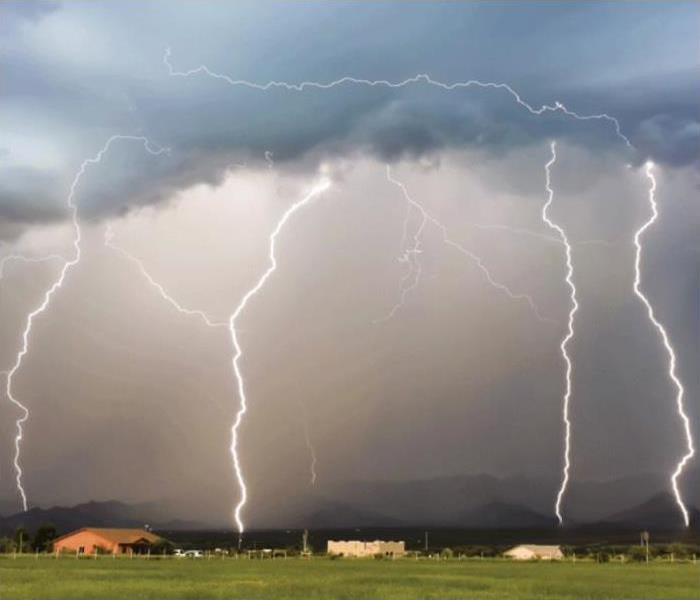How to Protect Yourself in a Thunderstorm
10/7/2019 (Permalink)
Find shelter immediately. If you find yourself caught in a lightning storm, the key to minimizing danger is to get inside a protective structure. While most people seek shelter if lightning appears to be near, people commonly wait too long to seek shelter. If you can detect lightning, it may be close enough to strike you. Don’t wait for it to strike right next to you (or on top of you) to get to safety. Never stand under a tall or short tree, and avoid being close to power lines as they're both excellent conductors of electricity and could potentially cause death, if not serious injury. Find shelter near or under a stony shelter such as a cavern.
- Substantial, frequently inhabited buildings (those grounded with plumbing, electrical systems, and, if possible, lightning rods) are best.
- If you can’t find a substantial structure, get in a car with a metal roof and sides. If the car is struck, the metal body will conduct the electricity around you, not through you. Make sure all windows are rolled up and doors are closed. Be careful not to lean against any metal -- if you do, the lightning will be conducted into your body if it strikes the car. Do not use the radio.
- Avoid small structures, such as stand-alone public restrooms. Open covering and rain shelters are also not suitable. These structures will attract lightning and provide no protection, making them more dangerous to be around.
- Standing under a tree is a very bad choice. Lightning strikes tall objects, and if the tree you are standing under is struck, you may be struck as well or injured by the tree.
- Bring in your pets. Doghouses and other pet shelters are not suitable protection against lightning strikes. A pet leashed to a fence has a much higher risk of getting struck by lightning.
Stay away from windows. Keep windows closed, and try to stay within inner rooms of the structure. Windows provide a direct path for the lightning to travel.
Don’t touch anything metal or electrical. Using a landline phone is the main cause of lightning-related injuries in the US. Lightning can travel into the home from through any material that conducts electricity. This includes landlines, electrical wiring, and plumbing.
- Do not touch any electrical outlets during a storm. Do not unplug any devices during a lightning storm, as the strike could be transferred to you.
- Do not lie on concrete floors or lean against concrete walls. Most concrete has a wire mesh which can conduct electricity.
- Stay out of the bathtub or shower, and avoid indoor swimming pools.
- In a car, try to avoid touching any part of the metal frame or the car's glass.
Stay inside. Stay inside at least 30 minutes after the last strike. Don’t go out just because the rain is starting to let up. There is still a significant risk of lightning strikes from a departing storm.





 24/7 Emergency Service
24/7 Emergency Service
